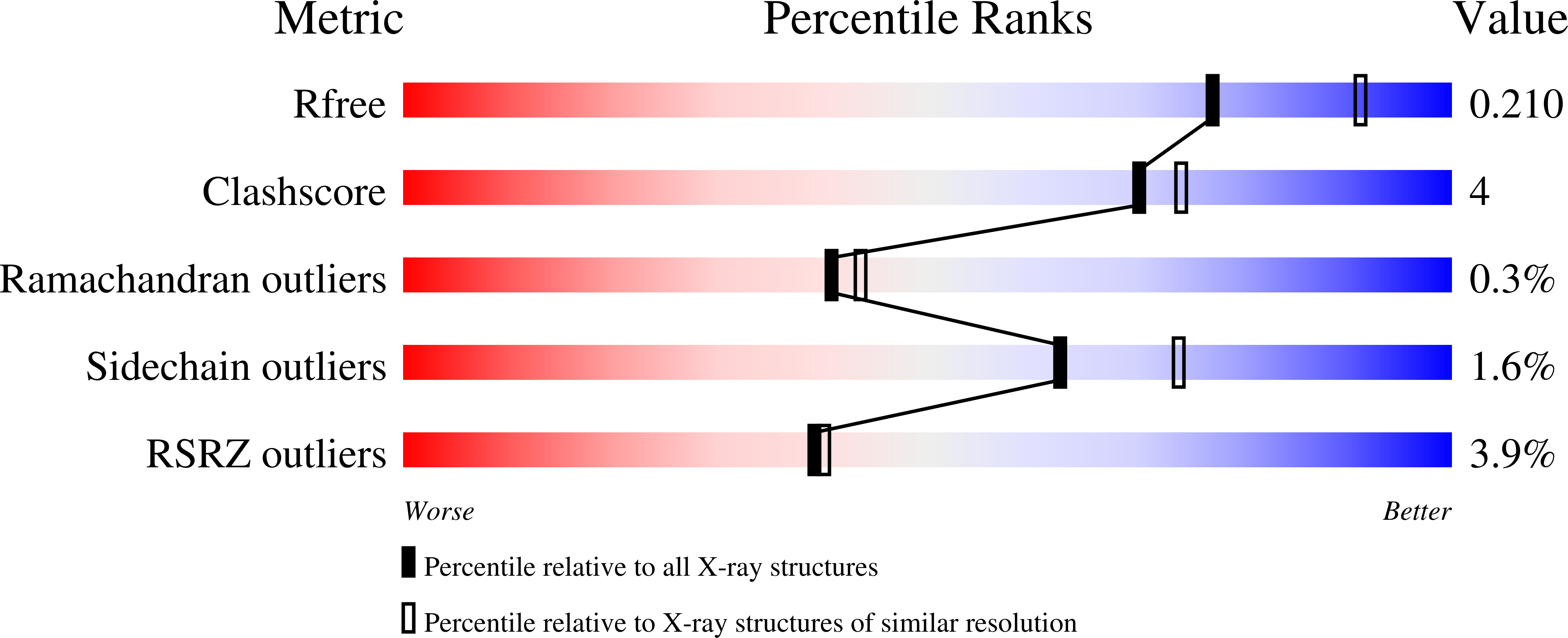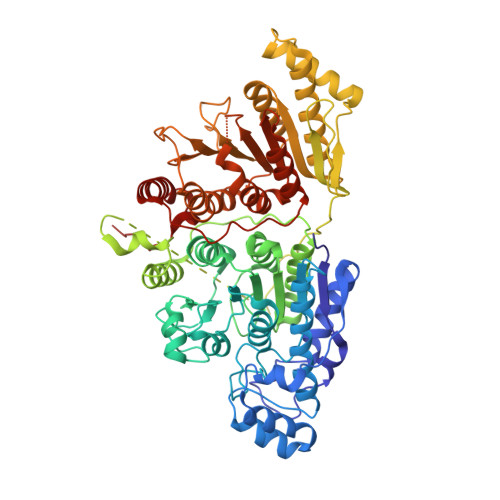First Fluorescent Acetylspermidine Deacetylation Assay for HDAC10 Identifies Selective Inhibitors with Cellular Target Engagement.
Herp, D., Ridinger, J., Robaa, D., Shinsky, S.A., Schmidtkunz, K., Yesiloglu, T.Z., Bayer, T., Steimbach, R.R., Herbst-Gervasoni, C.J., Merz, A., Romier, C., Sehr, P., Gunkel, N., Miller, A.K., Christianson, D.W., Oehme, I., Sippl, W., Jung, M.(2022) Chembiochem 23: e202200180-e202200180
- PubMed: 35608330
- DOI: https://doi.org/10.1002/cbic.202200180
- Primary Citation of Related Structures:
7U59 - PubMed Abstract:
Histone deacetylases (HDACs) are important epigenetic regulators involved in many diseases, especially cancer. Five HDAC inhibitors have been approved for anticancer therapy and many are in clinical trials. Among the 11 zinc-dependent HDACs, HDAC10 has received relatively little attention by drug discovery campaigns, despite its involvement, e. g., in the pathogenesis of neuroblastoma. This is due in part to a lack of robust enzymatic conversion assays. In contrast to the protein lysine deacetylase and deacylase activity of most other HDAC subtypes, it has recently been shown that HDAC10 has strong preferences for deacetylation of oligoamine substrates like acetyl-putrescine or -spermidine. Hence, it is also termed a polyamine deacetylase (PDAC). Here, we present the first fluorescent enzymatic conversion assay for HDAC10 using an aminocoumarin-labelled acetyl-spermidine derivative to measure its PDAC activity, which is suitable for high-throughput screening. Using this assay, we identified potent inhibitors of HDAC10-mediated spermidine deacetylation in vitro. Based on the oligoamine preference of HDAC10, we also designed inhibitors with a basic moiety in appropriate distance to the zinc binding hydroxamate that showed potent inhibition of HDAC10 with high selectivity, and we solved a HDAC10-inhibitor structure using X-ray crystallography. We could demonstrate selective cellular target engagement for HDAC10 but a lysosomal phenotype in neuroblastoma cells that was previously associated with HDAC10 inhibition was not observed. Thus, we have developed new chemical probes for HDAC10 that allow further clarification of the biological role of this enzyme.
Organizational Affiliation:
Institute of Pharmaceutical Sciences, University of Freiburg, Albertstraße 25, 79104, Freiburg, Germany.




















